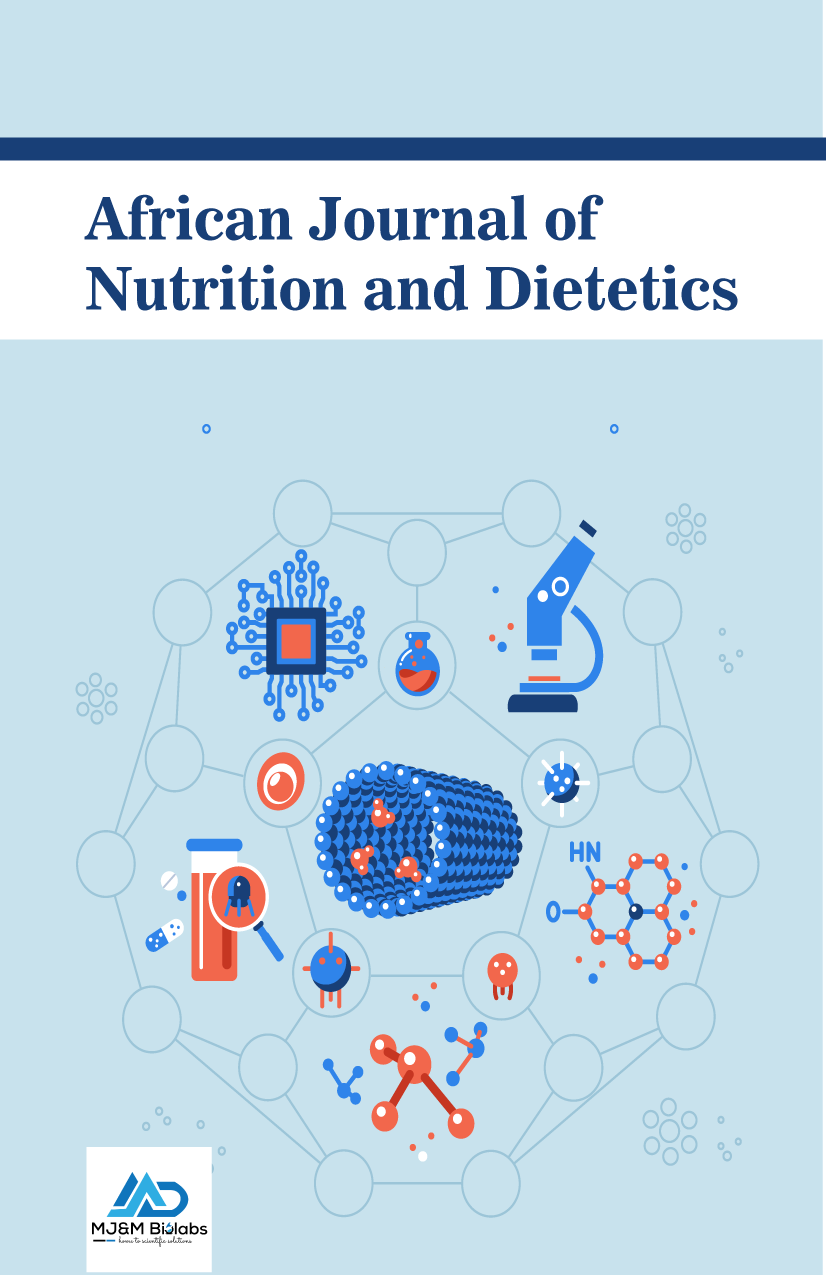Dietary Practices and Risk of Hypertension among Adults Attending Nakuru Level 5 Hospital, Kenya: A Cross-Sectional Study
Keywords:
hypertension, dietary practices, fruit and vegetable intake, sodium-potassium balance, kenyaAbstract
Hypertension is a major cause of cardiovascular morbidity and premature mortality. Statistics indicate that prevalence and gaps in awareness, treatment, and control are high in Kenya. Diet, in particular sodium and potassium balance, general quality, and intake of fruits and vegetables, is a preventive and controlling factor that can be manipulated. The study was a descriptive cross-sectional study among adults. A total of 215 respondents were selected through systematic random sampling. A semi-structured questionnaire was used to measure the frequency and daily servings of fruits and vegetables, as well as salt-related behaviors. A 24-hour recall was used to assess the intake of macro- and micronutrients. The analysis of data was done using SPSS v26 and descriptive statistics and chi-square tests on associations. Among 215, only 5.1% had normal BP; 18.6% elevated; 52.6% stage 1; 23.7% stage 2. Vegetables were eaten most days; fruit 3–4 days/week; daily fruit was rare. Portions favored vegetables (4–5/day) over fruit (2–3/day). Energy and fibre were low; ~half exceeded fat ceilings. Mean sodium exceeded targets (men 2,310 mg; women 2,220 mg); potassium adequacy ~20%. About 76% often/always added salt during cooking; ~13% added at the table; label reading 3.7% and low-sodium purchases 7.4%. Fruit days/week (p=0.001), vegetable servings/day (p<0.001), and several salt-related practices (p≤0.024) associated with stage. Conclusion: Hypertension is a high burden, and the dietary habits of the study participants are low fibre, excess sodium, low potassium, and key micronutrient consumption mixed with a high dietary intake of vegetables and low frequency of fruits. Recommendations: Push high-fibre foods that contain high potassium (leafy greens, legumes, whole grains, an apple a day); introduce systematic deficit of sodium (measured salt, less use of stock cubes/processed foods, label literacy); part of clinic workflow integration (minimal diet screening, counselling); and food-environment support (canteen defaults, access to produce).
Downloads
Published
How to Cite
Issue
Section
Copyright (c) 2025 Winnie MOIMET, Miriam MUGA, Peter CHEGE

This work is licensed under a Creative Commons Attribution-NonCommercial 4.0 International License.



